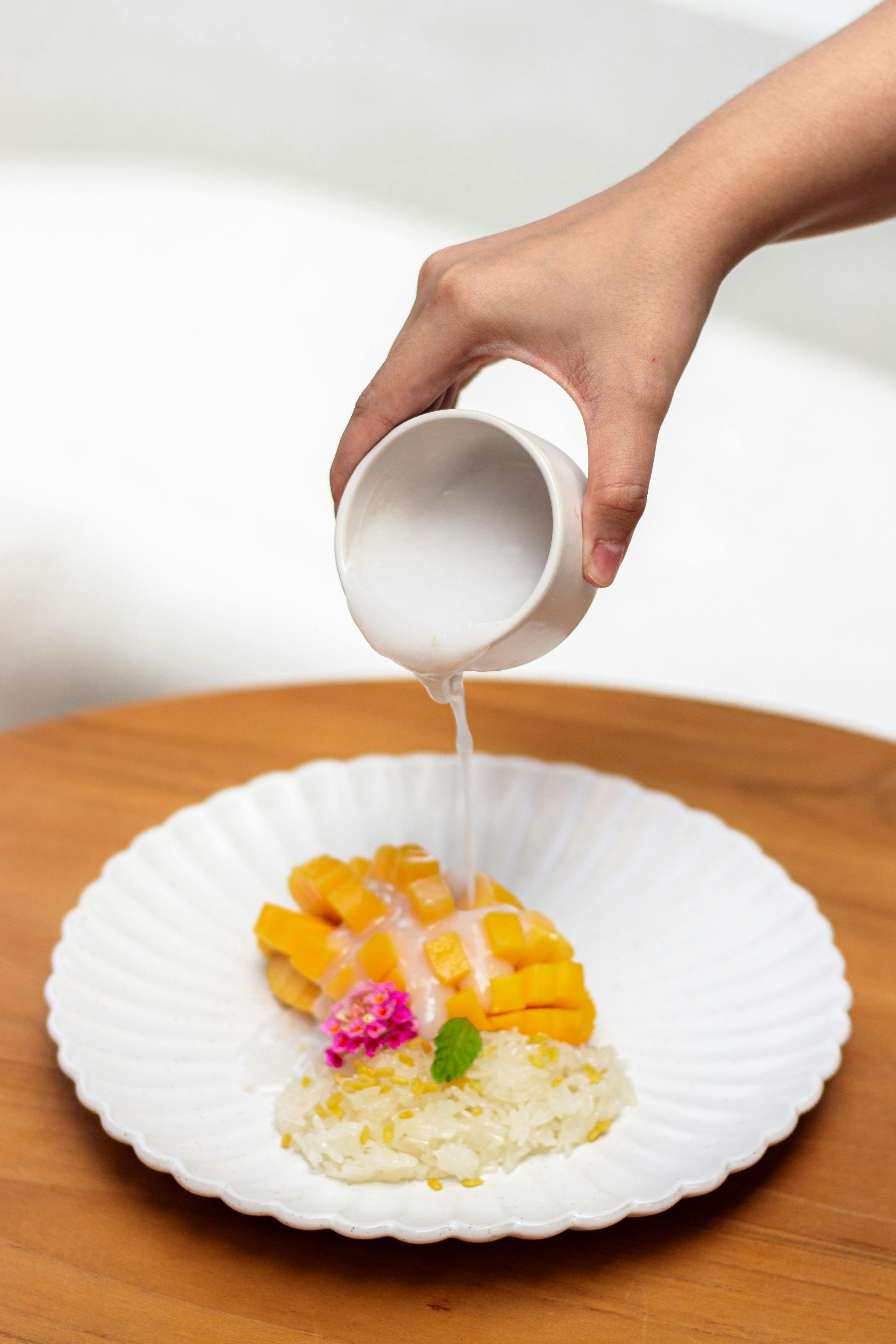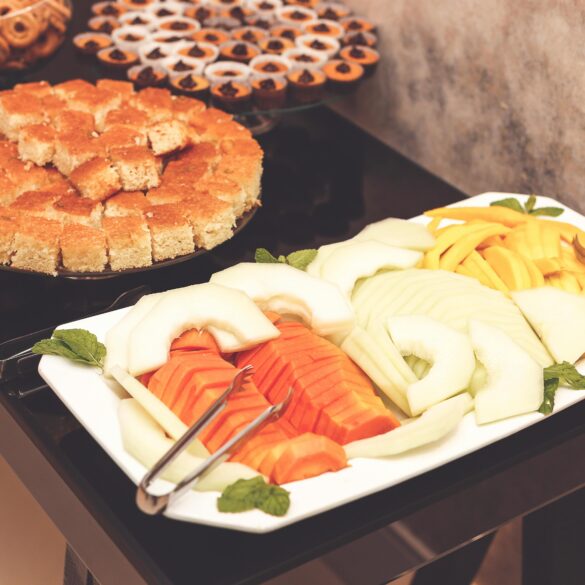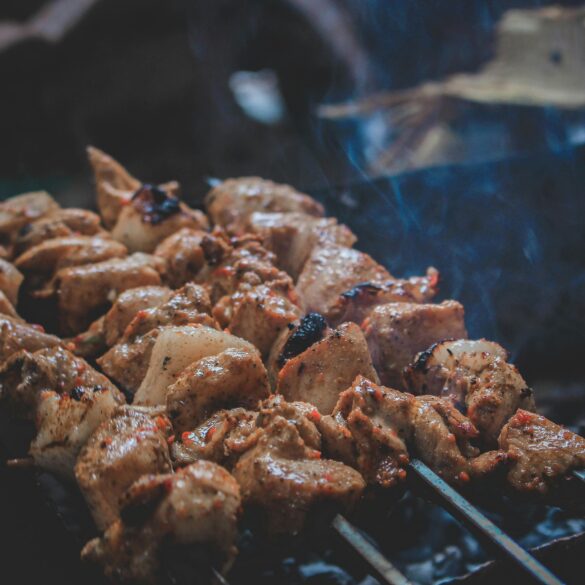Laos Sticky Rice Guide: Easy Steps for Memorable Home Dining
There’s something deeply satisfying—almost meditative, honestly—about watching Lao sticky rice (khao niao) transform from raw grains into a soft, fragrant mound ready for any home gathering. I’ll be honest: it took me ages to enjoy that moment without frustration, especially after plenty of sticky disasters (thought I could skip soaking; ended up with rice rock-hard enough for a sci-fi flick). Still, the learning process—mixing old family wisdom, food science, and feedback from local Lao cooks—led me to appreciate sticky rice not just as a side dish, but as a soulful centerpiece of absolutely unforgettable dining experiences. What really strikes me is how this single staple bridges family bonds, cultural pride, everyday comfort, and culinary adventure. If you’ve felt intimidated, tempted, or just plain curious about mastering authentic Lao sticky rice at home, you’re in the right place. And if you’ve “almost gotten it right” once or twice, I promise—your memorable sticky rice moment is closer than you think.
Why Sticky Rice Is the Heart of Lao Home Dining
Ever wondered why sticky rice is everywhere in a Lao home? It’s more than habit; it’s woven into daily rhythm, historic tradition, and festive occasions—a glue for community, both literally and figuratively. I remember sitting down at a modest village meal outside Luang Prabang and watching tiny hands pluck sticky rice from a communal bamboo basket (thip khao). That scene, honestly, changed my understanding: this isn’t a “side” dish. In fact, over 70% of Lao rice grown is the glutinous variety1, with local consumption nearly double that of neighboring Thailand—a reflection of cultural devotion above mere preference2.
“Sticky rice is our soul food. It’s there for every celebration, every goodbye, every sunrise.”
Sticky Rice 101: Grains, Varieties, and Secrets
Before I really understood what made Lao sticky rice exceptional, I thought “sticky rice” was all the same. Actually—let me clarify that—a few botched meals later, I learned glutinous rice (Oryza sativa var. glutinosa) is nothing like sushi rice or short-grain risotto, despite their “sticky” reputation. Most authentic Lao sticky rice uses “white glutinous” rice, with its high amylopectin and virtually zero amylose content4. That science matters: it determines chewiness, flavor depth, and the critical “clump but not mush” texture everyone raves about.
- White Glutinous Rice: Classic, snowy grains for 90% of Lao home dining
- Black/Purple Glutinous Rice: Nutty, hearty, favored for ceremonial dishes and desserts
- Local/Heirloom Varieties: More common in villages, adding earthier aromas and seasonal notes
First-Timer Mistakes (and How to Avoid Them)
I’ll be completely honest—the first five attempts I made at sticky rice ended with either a burnt crust, watery blob, or a fit of frustration that nearly scared me off Lao recipes for good. It’s easy to slip, but also easy to fix (once you accept soaking as non-negotiable). Here’s what I’ve learned:
- Don’t skip the soak. It softens outer starches for true stickiness.
- Steaming (not boiling) preserves texture—use a bamboo steaming basket (huad) if possible.
- Rinse well, but don’t grind the grains. You want intact, clean rice.
Here’s the thing: once you mess up a batch and try again, real learning begins. Lao sticky rice rewards patience, not shortcuts.
Essential Ingredients & Kitchen Tools
Let’s be practical for a moment—before anyone dives into sticky rice, get the basics sorted. You don’t need a fancy set-up, but there are must-haves that really make the process easier and results better. And, full disclosure: I used a mesh colander and pasta pot my first year trying Lao sticky rice. The final texture? Fine, but not quite “memorable.”
- Glutinous rice (white preferred): Look for “Thai sticky rice” or “Lao glutinous.” Avoid “sweet rice” unless clearly labeled for sticky use.
- Water: Clean, cold water. If using tap, filter for best flavor.
- Bamboo Steaming Basket (huad): The traditional tool, shaped perfectly for steam circulation. Metal is okay, but bamboo adds subtle aroma.
- Sticky Rice Basket (thip khao): For serving—absolutely changes the vibe of home dining.
Optional (But Amazing) Upgrades
- Muslin cloth for gentler steaming and easier rice handling
- Banana leaf wrap for subtle smoky aroma
Freshness, Seasonality, and Sustainable Sourcing
Honestly, I used to grab whatever glutinous rice was cheapest. Turns out, new-crop sticky rice (harvested within the last six months) transforms texture from “fine” to “phenomenal.” In Laos, rice is sorted seasonally—a tradition most local markets honor. Try asking your local Asian grocer about harvest dates; it pays off.
| Rice Type | Season | Source | Typical Price (USD/kg) |
|---|---|---|---|
| White Glutinous | Nov–Feb (new crop) | Laos, NE Thailand | $2.50–$4.00 |
| Black Glutinous | Year-round | Local/Organic | $4.00–$6.00 |
| Heirloom | Jun–Oct | Rural Laos | $4.50–$7.00 |
Budget- and Access-Friendly Tips
- Don’t worry about brand—focus on region, harvest, and visual quality.
- Heirloom varieties cost more but stretch further (absorbing more water, yielding higher volume).
- Co-ops and farmers’ markets sometimes stock direct-import Lao sticky rice—ask around!6
The Science of Soaking: Texture and Flavor
Many people—myself included, back in the day—think soaking is just about convenience. Actually, soaking activates structural changes in the rice starches, especially in glutinous types: their amylopectin chains relax and hydrate, creating the true “stretch factor” of Lao-style sticky rice7.
- Measure rice: 1 cup = about 2 servings. Rinse gently, swirling in cold water until clear.
- Soak: Use double the volume of water, keep cool (not room temperature in summer).
- Drain before steaming. Do not use hot water; it can over-soften outer layers.
Funny thing: the one time I forgot to drain fully, my “sticky rice” was, well, more soup than staple.

The Lao Way: Step-by-Step Sticky Rice Preparation
Let’s get into the heart of it—the actual sticky rice making “ritual,” as some of my Lao friends called it. I’ll walk through the classic method, along with a few hacks for home cooks who might lack specialty gear.
First, though: breathe. Sticky rice rewards calm, patient attention. Rushing—learned that the hard way—leads to uneven grains and disappointment.
- Rinse & Soak: Rinse your chosen rice in cold water until it runs clear. Soak 4–8 hours (overnight is ideal).
- Steam Setup: Line basket (“huad”) or mesh steamer with damp cloth for airflow. Fill steamer pot with boiling water (do not touch rice).
- Steaming: Add soaked, drained rice; cover with bamboo lid. Steam 20–25 minutes, then gently flip rice mound with damp paddle.
- Rest & Serve: Steam 10 extra minutes, fluff lightly, then pack into thip khao. Serve warm, with dipping sauce, grilled meat, or fruit.
Sticky Rice Comparison Table
| Method | Skill Level | Result | Common Mistake |
|---|---|---|---|
| Traditional Bamboo Steam | Intermediate/Expert | Perfect chew, smoky aroma | Over-steaming, dry edges |
| Metal Mesh + Cloth | Beginner | Good texture, less aroma | Soggy bottom, uneven grains |
| Electric Rice Cooker (Steamer) | Any | Consistent softness | Clumpy top, bland flavor |
“For Lao sticky rice, the key is not in technology but in tradition. Steam, flip, rest. Not difficult, just attentive.”
Does it sound too simple? Maybe. Still, most memorable Lao sticky rice moments—in my experience—are the result of patiently following these steps, with occasional improvisation based on kitchen quirks or seasonal conditions.
Advanced Tips & Common Pitfalls
Texture, Aroma, and Presentation
- Let the rice rest 5–10 minutes after steaming for improved texture and flavor concentration8.
- Use banana leaves or muslin to wrap rice for a smoky, earthy finish.
- Serve in thip khao baskets to preserve warmth and tradition.
Troubleshooting Guide
| Problem | Likely Cause | Fix | Quick Tip |
|---|---|---|---|
| Rice too hard | Under-soaked/under-steamed | Soak longer, steam extra 5 mins | Test one grain before finishing |
| Rice too mushy | Over-soaked, direct boiling | Use less water, switch to steam | Line steamer with cloth |
| No aroma | Old rice/metal tools | Try fresh, seasonally sourced rice | Add banana leaf or bamboo |
Frequently Asked Questions
- Can I use a rice cooker? Yes—use the steam basket, keep grains off direct water.
- How long does sticky rice keep? Best eaten fresh, but reheated in basket (with splash of water) works fine for 24 hours.
- Is sticky rice gluten-free? Absolutely—“glutinous” refers to texture, not gluten content. Safe for celiac diets10.
Serving Traditions & Creative Variations
The beauty of Lao sticky rice, from my perspective, is in how flexible and communal it feels at the table. Traditional home dining means passing the thip khao and letting everyone scoop their portion—no utensils needed. Tastes even better paired with jeow (spicy dips), grilled meats, or fresh fruit. But there’s a growing creative streak in Lao families worldwide: sticky rice pops up in salad bowls, dessert wraps (with coconut and mango), and even modern “fusion” dishes. It’s amazing how a centuries-old staple keeps evolving, yet never loses its comforting soul.
- Classic: Served with grilled chicken (ping gai) and spicy jeow bong sauce
- Creative: Rolled into balls for picnics or kids’ lunches
- Dessert: Mixed with coconut milk, topped with fresh mango
Cultural Connections, Health Benefits & Sustainability
Want another reason to make sticky rice a home staple? It’s packed with energy, is easy to digest, and, according to recent studies, may help regulate blood sugar thanks to its unique starch structure11. Plus, when sourced responsibly, Lao sticky rice supports smallholder farmers, sustainable practices, and, often, local biodiversity.
“Sticky rice is more than food. It’s memory, medicine, and connection across generations.”
Cultural fact: Sticky rice is part of religious offerings and festivals—what really surprised me, though, was how many families keep a basket ready for unexpected guests, just in case. Small gestures, big hospitality.
Sustainable Cooking Suggestions
- Buy from farmer co-ops or fair-import markets
- Reuse water for plants after soaking rice
- Compost banana leaf or muslin cloth after wrapping rice
Authentic Learning & Future-Proofing Your Sticky Rice Skills
Here’s the thing: real mastery of Lao sticky rice improves over time. My earliest batches were decent—not memorable. Then, through small discussions with Lao elders, reading up on food chemistry12, and plenty of honest mistakes, I’ve developed an evolving approach that balances tradition and adaptation. As seasons change, so does rice quality and method—so don’t be afraid to revisit this guide, tweak recipes, and share new insights with your community.
References
Sources & Further Reading



